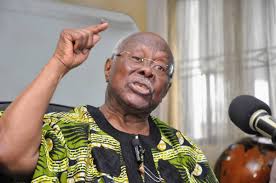Unemployment at four-year high heaps pressure on RBA to ‘not make same mistake twice’
of finance ministers, blamed the increase in unemployment on global factors.
“Today’s tick-up in the unemployment rate is the inevitable consequence of economic uncertainty and volatility around the world and the ongoing impact of higher interest rates,” he said.
But shadow treasurer Ted O’Brien said the government’s policies were contributing to higher unemployment.
“Labor promised to create secure jobs and strengthen the economy, but the reality is rising unemployment, falling hours worked and weak full-time job creation,” he said.
Loading
The jobs report follows the surprise decision this month by the Reserve Bank to hold the official cash rate steady at 3.85 per cent. It cited tight labour market conditions as one of the reasons for the decision.
The Australian dollar lost half a cent against the US dollar on expectations that the RBA will use its August 11-12 meeting to cut the cash rate.
KPMG chief economist Brendan Rynne said the Reserve Bank had not expected unemployment to get to this level until the end of the year.
“While quarterly inflation data is still a week or so away, today’s data will reinforce the weakness that is continuing within the private side of the Australian economy, and even by itself should be enough for the RBA to drop the cash rate at its next meeting,” he said.
Loading
Asia-Pacific economist for jobs website Indeed, Callam Pickering, said the figures confirmed the Reserve Bank had been wrong to hold interest rates steady this month.
“The RBA surprised almost everyone by leaving rates unchanged in July. It was the wrong decision at the time and they surely won’t make the same mistake twice,” he said.
The jobs report is the last measure of employment before the RBA’s August meeting. The June quarter consumer price index, which is expected to show underlying inflation growing around 0.7 per cent, is due for release on July 30.
Oxford Economics Australia head of economic research, Harry Murphy Cruise, said the June job report was another good reason for the Reserve Bank to “get a wriggle on” with rate cuts.
“Looking ahead, the labour market has a number of challenges nipping at its heels. First and foremost, President Trump’s tariffs are weighing on business investment and prompting some firms to rethink hiring plans,” he said.
AMP economist My Bui said that given the disappointing numbers and signs that the job market was softening, the RBA was likely to deliver four more rate cuts this year and into 2026.
The jobs report followed the release of National Australia Bank’s closely watched quarterly measure of business conditions, which fell to its lowest level since the second half of 2020.












